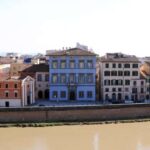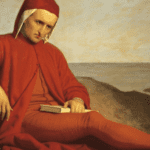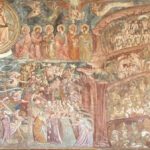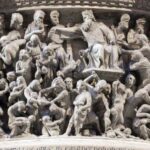Muhammad in hell: Pisa in the fourteenth century we had left with Ludovico il Bavaro who abandons Pisa and Fazio who regained the power of the city. We are in 1329 and it is in this historical context that the Monumental Cemetery fits.
They can check to see what’s causing your eye issues, and they’ll recommend whether you need medical treatment. All patients achieved sputum culture conversion within a mean of 71 days (26–116); 5 after starting bedaquiline. Be sure to tell your doctor how you are feeling during your treatmenthttps://farmaciaonlinesinreceta.org/viagra/. If a patient relapsed, therapy was increased to 2. Let’s find out together what the Camposanto has to do with everything I told you in the previous article.
Muhammad in Hell: the Camposanto – Buonamico Buffalmacco
Fazio needed to find the perfect place to publicly deny Ludovico and Niccolò.
In the Duomo the sculptural group dedicated to Arrigo VII dominated the high altar.
The Tower was not a meeting place and had no propaganda use.
The Baptistery was not yet finished and frescoing it made no sense.
The Camposanto, on the other hand, was perfect.
The south side had just been built, the walls were bare and were the ideal canvas for a redemptive poster.
The Pisans chose Buffalmacco for his extraordinary fame and because he knew Hell and the sermons of the monks well.
He had been entrusted with the task of illustrating the edition of the Divine Comedy commented by Guido da Pisa, the first and most famous of Dante’s commentators, which today is preserved in the Condé Museum in Chantilly.
He was an illustrated painter, able to understand the interpretation of the Carmelite Guido, and was the first to put in pictures the most famous of the books of the Dante trilogy.
The program was carefully designed by the Dominicans of Santa Caterina, then among the most renowned Italian intellectuals.
They tried to redeem that proud, heretical and Ghibelline Pisa, merchant and greedy.
The pen of Domenico Cavalca and the guide of Archbishop Saltarelli, brother of the Guelph Lapo vilified in the Comedy by the mouth of Cacciaguida, would have been the wood and fire of the stake in which to burn the power and vanity of Pisan.
The Triumph of Death
The cycle of frescoes begins with the Triumph of Death.
In the first scene we see a group of young scions who find three dead: according to Vasari, Uguccione della Faggiola is the disgusted knight who covers his nose, while Castruccio Castracani carries a hawk on his glove.
Behind a mountain, in the center of the image, the Apocalissi is unleashed: numerous dead people wearing fine robes lie abandoned, while angels and demons fight for their souls.
The only one to be saved is the Archbishop, probably Saltarelli, who will die a short time later.
The Last Judgment
In the next fresco, the Last Judgment, we will see the powerful imploring, we will see them crying kneeling at the feet of St. Michael.
Most of the saved are saints and bigoted women.
Among the damned there are many kings and madonnas who wear luxurious clothes: among them we also see oriental men and some Jew.
But there is no shortage of tonsurates, like the two that appear at the bottom, hidden among the ladies who try to escape from the claws of the demons that drag them to hell.
Curiously, there is a scene in the middle part where a Franciscan friar who comes out of his grave is dragged by the hats by an angel, who sends him to the condemned, while crossing paths with another angel who carries a soul that deserves to be saved according to St. Michael.
Between the two of them a king tries to get to Paradise without being seen by the archangel.
Researchers have seen in this King Ludwig and in men, for their detailed physiognomy and proximity to the Emperor, two members of Pisan rival factions.







